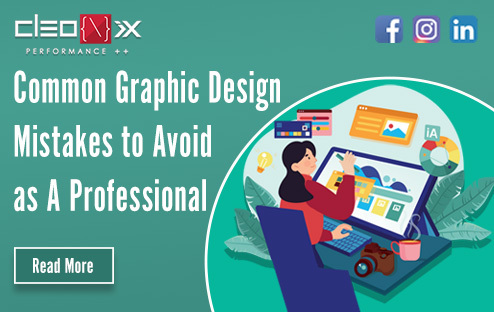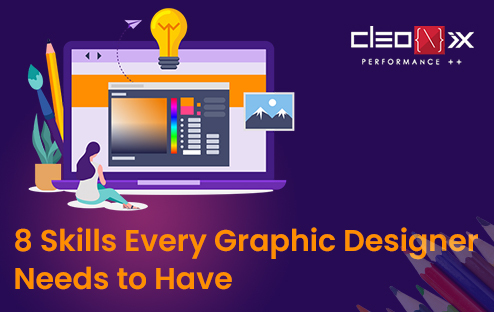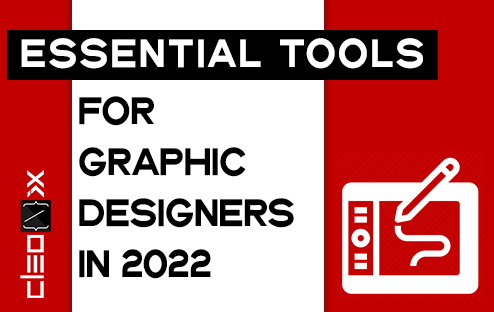
In today’s digital age, having a website is essential for businesses and individuals alike. However, it’s not enough to simply have a website; you must also focus on creating a positive user experience (UX) for your visitors. A great user experience can significantly impact your website’s success, from attracting and retaining users to boosting conversions and customer satisfaction. In this blog post, we will discuss some valuable tips to help you improve your website user experience.
- Responsive Design: One of the fundamental aspects of a good user experience is ensuring that your website is responsive. With the ever-increasing use of mobile devices, it’s crucial that your site adapts seamlessly to different screen sizes. A responsive design ensures that users can access and navigate your website easily, regardless of the device they are using.
- Clear and Intuitive Navigation: Navigating a website should be effortless for visitors. Implementing a clear and intuitive navigation structure will help users find the information they’re looking for quickly and efficiently. Consider using a logical hierarchy of menus, including drop-downs or breadcrumbs, to provide users with a sense of orientation and allow them to navigate your site with ease.
- Streamline Content and Structure: Presenting your content in a structured and organized manner is vital for a positive user experience. Break your content into sections and use headings, subheadings, and bullet points to make it scannable. Be concise and eliminate unnecessary fluff. Users should be able to skim through your content and grasp the main points without any confusion.
- Optimize Page Loading Speed: In today’s fast-paced world, users have little patience for slow-loading websites. A website that takes too long to load can lead to frustration and increased bounce rates. Optimize your website’s performance by compressing images, minifying CSS and JavaScript files, and leveraging browser caching. Regularly monitor your site’s loading speed and make necessary adjustments to ensure optimal performance.
- Use Visuals Wisely: Visual elements such as images, videos, and infographics can enhance the user experience if used judiciously. High-quality images and videos can grab attention, convey information effectively, and create an emotional connection with your audience. However, be cautious not to overload your website with heavy media files, as this can negatively impact loading times.
- Incorporate Consistent Branding: Consistency in branding across your website is essential for a cohesive user experience. Use consistent colors, fonts, and imagery that align with your brand identity. This helps users recognize your brand easily and builds trust and familiarity. Ensure that your logo and branding elements are prominently displayed throughout the site, especially on the homepage.
- Implement Clear Call-to-Actions (CTAs): A clear call-to-action is crucial to guide users towards their desired actions on your website, whether it’s making a purchase, signing up for a newsletter, or contacting you. Use concise and action-oriented language for your CTAs, and make them visually distinct from other elements on the page. Experiment with different placements and designs to find the most effective CTA strategy for your audience.
- Optimize Forms and User Input: Forms play a significant role in gathering user data and enabling interactions on your website. Ensure that your forms are user-friendly and easy to fill out. Minimize the number of required fields and use smart form validation to provide real-time feedback to users. Implement autofill capabilities whenever possible to streamline the process further.
- Prioritize Accessibility: Designing your website with accessibility in mind ensures that all users, including those with disabilities, can access and navigate your content. Use descriptive alt tags for images, provide captions for videos, and ensure sufficient color contrast for text readability. Implementing accessibility features not only helps a wider audience engage with your website but also demonstrates your commitment to inclusivity.
- Test and Gather User Feedback: Continuous testing and gathering user feedback are essential for improving your website’s user experience. Conduct usability testing with real users to identify any usability issues or areas for improvement. Collect feedback through surveys, feedback forms, or user analytics tools. Use this valuable input to make data-driven decisions and refine your website to better meet the needs and expectations of your audience.
Conclusion:–
Providing a positive user experience is crucial for the success of your website. By following these tips, you can create a website that is intuitive, visually appealing, and optimized for performance. Remember to regularly monitor and analyze user behavior to identify areas for improvement and stay updated with evolving trends and technologies. By prioritizing user experience, you can enhance engagement, increase conversions, and establish a strong online presence for your brand or business.
ALSO READ: Why Custom 404 Page is More Important for a Better User Experience

As a professional graphic designer, you strive to produce designs that are not only visually appealing but also communicate the intended message effectively. However, even the most seasoned designers are prone to making mistakes that can compromise the quality of their work. In this blog post, we will explore some of the most common graphic design mistakes to avoid.
Poor Typography: Typography is a crucial element of graphic design, and as such, should never be taken for granted. It’s important to choose fonts that are legible, easy to read, and appropriate for the intended message. Avoid using too many fonts in a single design, as this can create a cluttered and unprofessional look.
Inconsistent Branding: Consistency is key when it comes to branding. Your designs should reflect the same look and feel across all platforms to create a strong brand identity. This includes using the same color palette, typography, and visual elements across all marketing materials.
Overuse of Stock Images: Stock images can be a great resource for designers, but overusing them can make your designs look generic and uninspired. Whenever possible, try to incorporate original photography or illustrations into your designs to give them a unique and authentic look.
Ignoring White Space: White space, also known as negative space, is the area between design elements. Ignoring white space can make your designs look cluttered and confusing. By utilizing white space effectively, you can create a sense of balance and visual hierarchy in your designs.
Lack of Contrast: Contrast is an important design principle that can help draw attention to key elements of your design. Whether it’s through color, size, or typography, it’s important to create contrast to make your designs stand out and communicate the intended message effectively.
Poor Image Resolution: Low-resolution images can make your designs look pixelated and unprofessional. Always use high-resolution images to ensure your designs look sharp and clear.
Ignoring Accessibility: Accessibility should be a key consideration in all your designs. This includes making sure your designs are easy to read, have adequate color contrast, and are accessible to users with disabilities.
Overcomplicating Designs: Sometimes less is more when it comes to graphic design. Overcomplicating your designs with too many elements can make them look cluttered and confusing. Instead, aim for simplicity and clarity in your designs.
Lack of Planning: One of the biggest mistakes designers make is diving right into a project without proper planning. Take the time to research and plan your designs to ensure they effectively communicate the intended message and meet the client’s needs.
In conclusion, graphic design is a constantly evolving field, and as a professional designer, it’s essential to stay up to date with the latest design trends and techniques. By avoiding these common graphic design mistakes, you can create designs that are not only visually appealing but also effectively communicate the intended message to your target audience. Remember that every design decision you make, from typography to color choices, has an impact on the overall effectiveness of the design. So, pay attention to the details and take the time to plan and execute your designs carefully. With these principles in mind, you’ll be able to produce designs that are not only beautiful but also effective, setting you apart as a top-notch graphic designer in the industry.
READ ALSO: 5 Mistakes You Must Avoid While Adding Images To Your Site

Graphics designing is one of the hottest things right now in the job market. Day by day, as technology advances and people turn to the internet, more and more businesses keep popping up online requiring website designing, promotional materials, etc, and not just online businesses, even the offline ones require a team that can cater to their designing needs, as such, the demand for graphic designing and designers are huge. Graphic designing is a working field which brings together art and technology. It is not only fun and stimulating and also very lucrative. According to Monster data, top graphic designers can earn up to $37 per hour and designers who reach upper-level positions like art or graphic directors can earn a income of more than $83,000 per year. According to Kevin Jankowski, director of the Rhode Island School of Design’s career Centre: “In our visually saturated world, graphic designers are more important than ever, since they help filter the visual cacophony that we’re bombarded with every day.” If you are thinking of becoming a graphic designer, you can easily have a great career with good salary package, provided you have the necessary skills:
Creativity
The most basic skill required for being a graphic designer is creativity. Being a designer, you need to come up with new ideas and innovative designs that can grab people’s attention while successfully communicating the intended purpose. You need to figure out unique ideas for each new project that you work on which is why being creative is the number one requirement.
Communication
Visual communication is another important aspect of graphics designing which is why great communication skills are required. One of the challenging things a graphic designer has to do is to communicate his/her ideas through the designs. Often times, a designer may need to discuss details with a colleague or explain the purpose of a design to the client, without getting much technical. This is why having good communication skills is pretty much important.
Typography
Typography is another skill required to be a graphic designer. Selecting the right kind of fonts and typesetting is important in graphic designing as they can give meaning to the designs and clearly communicate the intended message. Wrong typography can destroy your designs or be unappealing to people which is why graphic designers are needed to be skilled in typography.
>> READ ALSO: JPG or PNG: Which is the best for Your Website?
Adobe’s Creative Apps
The world of graphic designing mostly revolves around Adobe and its creative software. Graphic designing projects, whether big or small, are generally done with the use of Adobe creative software like Adobe Illustrator, InDesign, and Photoshop. Thus, to be a successful graphic designer, it is absolutely necessary for you to know how to use and work with Adobe software.
Coding
Even though most general graphic designing work does not require coding, website developing and designing companies look for designers with some knowledge of coding. If you have a basic understanding of HTML, or other languages like java or C++, it helps you to understand the work that goes behind creating and designing a website. These skills make you more marketable and gives you an edge over your competitions.
Strategy Planning
Graphic designers need to be good strategists. They need to do market research, brainstorm and develop new ideas and evaluate designs. A good graphic designer should be able to figure out which design elements work well together and what is best way to convey a message using designs.
Time Management
Time management skill is a must for graphic designers. Often times, a graphic designer may work on multiple projects with deadlines from different clients. He/she should be able to properly balance the projects, prioritise work accordingly and deliver results on time.
Print Designing
Even though graphics designing is digitizing, possessing the skill of designing for print is good for your own profile and still useful. A graphic designer should have the understanding of elements like bleed, slug, crop, and fold marks, etc., He/she should also have a knowledge of different file formats, color systems, paper sizes, weights, and stocks.
>> READ ALSO: 5 Mistakes You Must Avoid While Adding Images To Your Site

Earlier, graphic designers had some limitations while choosing pro tools for designing, but not anymore. In this current market, designers can easily choose from various options available which even include some open-source platforms. In fact, users are no longer restricted to using tools that only work on Windows and Mac operating systems.
There are various designing software and apps on iOS, Android, Chrome OS, and Linux. However, with all these options available in the market, designers might get confused regarding choosing the best one for them. So, in this article, let us discuss essential tools for graphic designers in 2022.
Four Essential Tools for Graphic Designers in 2022 >>
Adobe Illustrator :-
When it comes to setting a standard for designing logos, icons, infographics, and many more, Adobe Illustrator is the perfect choice for professionals. The users can easily work from a handmade sketch or painting to a vector image. Moreover, the image is scalable to any size. The software has a different approach when working with graphics. For effortless resizing, it uses mathematical calculations instead of pixels.
Pros
- It integrates seamlessly with other tools from the adobe family
- Easy to use interface
- Users can choose templates or start from scratch
Cons
- The subscription plans are expensive
- The learning curve is high
Adobe Photoshop :-
Even non-graphic designers know the purpose of Adobe Photoshop. For some time, it has been the industry standard when it comes to graphic designing. So, there must be some reason for this immense popularity. For example, the vast collection of image editing tools provides a great user experience and extensive tutorials for any help. In fact, from artistic filters to the canvas size, users can have full control over everything.
Pros
- Seamless integration with the Adobe family
- It supports various formats, like PNG and JPG
- Extensive collection of templates, tools, and more
Cons
- The subscription plans are a bit pricey
- Resource-demanding
Procreate :-
Procreate is a complete package when it comes to art studio but it is only available for Apple Pencil Support and iPad. There is no free or, trial available for Procreate, it’s available only through one-time purchase. It offers users a wide range of templates, customizable brushes, and fonts. In fact, users can incorporate their photoshop features on the app, as it works better with the Valkyrie engine. Moreover, the app is also user-friendly.
Pros
- Users can import their photoshop brushes
- Apple Pencil Support
- Wide range of tutorials in the library
Cons
- The learning curve is steep
- There is no free or trial version available
Affinity Designer :-
Affinity Designer is a good choice for personal projects and designers who are just starting out. The software can easily give a good competition to Adobe Illustrator in terms of designing tools. Moreover, Affinity designer is known for providing one of the easiest to use interfaces out there in the market. So, if someone is looking for a budget-friendly option without compromising on features, Affinity Designer is a perfect choice.
Pros
- Customer service is excellent
- Budget-friendly pricing
- Unlimited artboards
Cons
- The documentation can be confusing
- No cloud service
Conclusion
While you are in the market looking for designing software, there will be a countless number of options from free to open-source. But you need to consider your requirements, capabilities and skillset. For instance, if you’re just starting out, don’t go for that software that is difficult to use. However, you can check out the four tools we have mentioned because they guide you around regardless of your level.
Read also:- JPG or PNG: Which is the best for Your Website?
About the author
Cleonix Technologies
A professional Web Development Company is highly focused on providing world class and best in the industry standard services in every domain that we work upon.

 AJ 14, Salt Lake, Sector 2, Kolkata - 700091 |
AJ 14, Salt Lake, Sector 2, Kolkata - 700091 |  743 Virginia Ave NE Atlanta, GA 30306
743 Virginia Ave NE Atlanta, GA 30306




